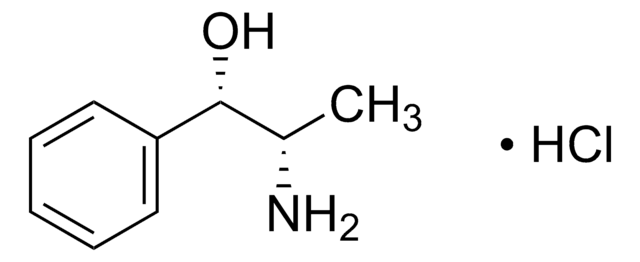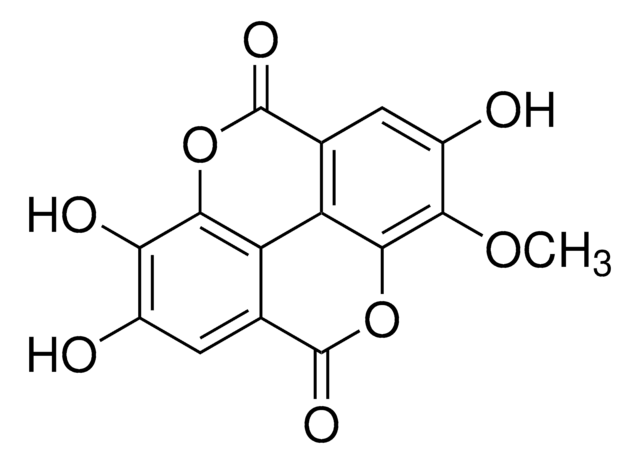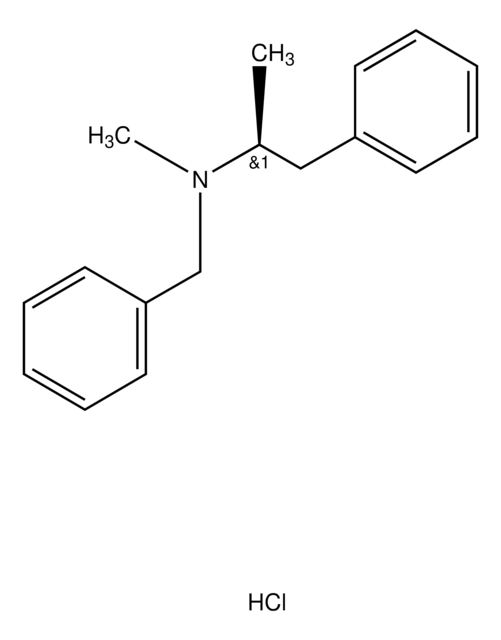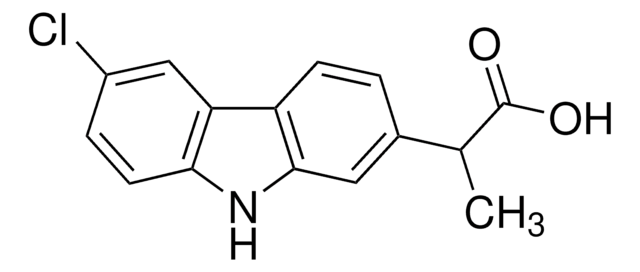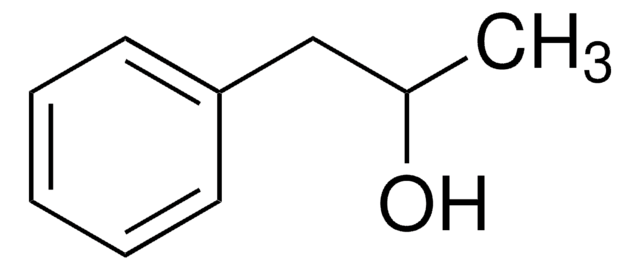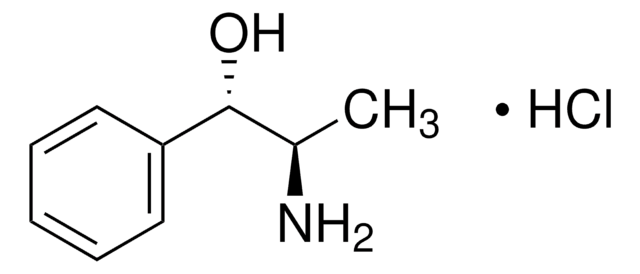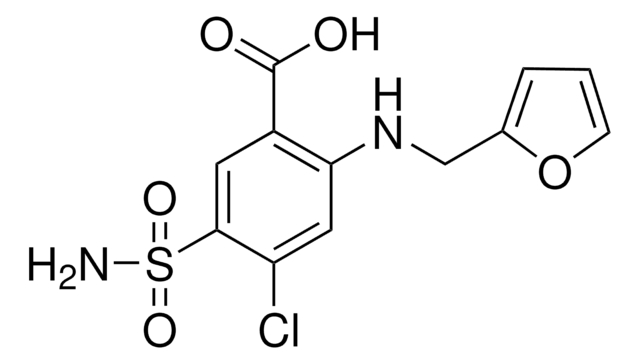C3196
S(−)-Cathinone hydrochloride
Synonym(s):
α-Aminopropiophenone hydrochloride, S(−)-2-Amino-1-phenyl-1-propanone hydrochloride
About This Item
Recommended Products
form
powder
Quality Level
drug control
USDEA Schedule I; Home Office Schedule 1; stupéfiant (France); kontrollierte Droge in Deutschland; regulated under CDSA - not available from Sigma-Aldrich Canada; psicótropo (Spain); Decreto Lei 15/93: Tabela IIA (Portugal)
technique(s)
HPLC: suitable
gas chromatography (GC): suitable
solubility
H2O: soluble
ethanol: soluble
application(s)
forensics and toxicology
pharmaceutical (small molecule)
veterinary
storage temp.
2-8°C
SMILES string
Cl.C[C@H](N)C(=O)c1ccccc1
InChI
1S/C9H11NO.ClH/c1-7(10)9(11)8-5-3-2-4-6-8;/h2-7H,10H2,1H3;1H/t7-;/m0./s1
InChI key
HPZCAKYHISJOIK-FJXQXJEOSA-N
General description
Biochem/physiol Actions
Signal Word
Warning
Hazard Statements
Precautionary Statements
Hazard Classifications
Acute Tox. 4 Oral - Eye Irrit. 2 - Skin Irrit. 2 - STOT SE 3
Target Organs
Respiratory system
Storage Class Code
11 - Combustible Solids
WGK
WGK 3
Flash Point(F)
Not applicable
Flash Point(C)
Not applicable
Personal Protective Equipment
Regulatory Listings
Regulatory Listings are mainly provided for chemical products. Only limited information can be provided here for non-chemical products. No entry means none of the components are listed. It is the user’s obligation to ensure the safe and legal use of the product.
JAN Code
C3196-10MG:
C3196-50MG:
C3196-10MG-PW:
C3196-25MG:
C3196-VAR:
C3196-50MG-PW:
C3196-BULK:
Choose from one of the most recent versions:
Already Own This Product?
Find documentation for the products that you have recently purchased in the Document Library.
Our team of scientists has experience in all areas of research including Life Science, Material Science, Chemical Synthesis, Chromatography, Analytical and many others.
Contact Technical Service